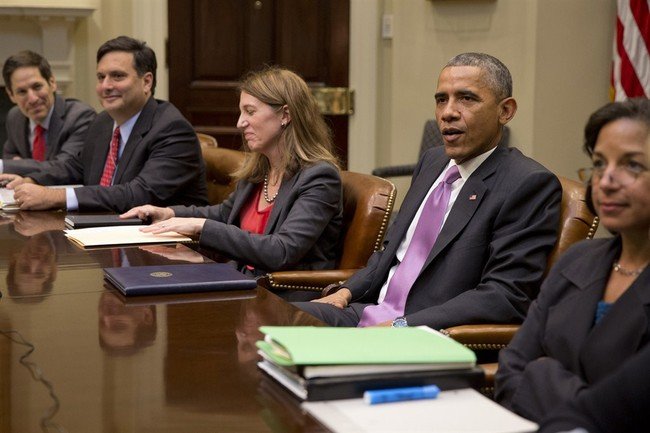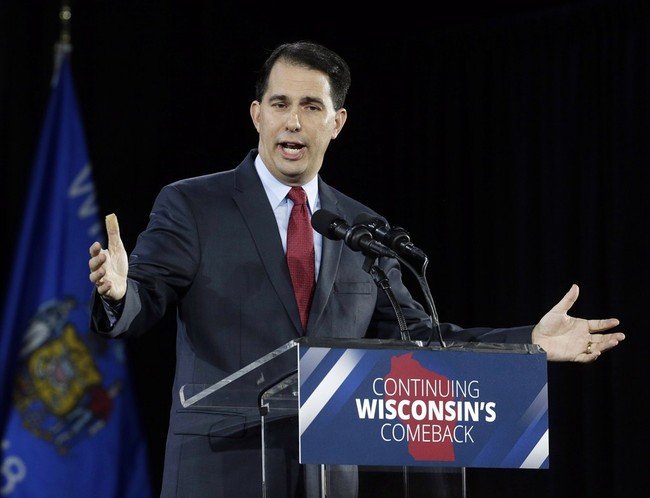Some election observations:
(1) It was a wave, people. It will be a reference point for evaluation of waves for each party for years.
(2) In seriously questioned races, republican candidates were generally younger, more energetic, more clear and positive than Democrats. The contrast was the sharpest in Colorado and Iów, who twice voted for President Obama. Cory Gardner and Joni Ernst seemed to be looking forward to the future. Their opponents grimly defended the dated causes of feminists and lawyers from the past.
Democrats perceive themselves as a party of the future. But their rules are age-old. The federal minimum wage dates from 1938, equal to women’s salary in 1963, access to contraceptives until 1965. The raising of these problems is now a campaign trick, not a earnest policy.
Democratic leading lights have been going on for a long time. In the 70s, two governors of the two largest democratic countries are the sons of former governors who won the first elections in the entire state in 1950 and 1978 in the 70s.
This has implications for 2016. Hillary Clinton, probably nominated by a democratic nominee, worked in her first campaign in 1970. He has been a national figure since 1991. The Clintons “Don’t Stop Thinking Abouthor” theme song was released in 1977. It will be 39 years ago in 2016.
(3) The combination of the low approval of Obama’s work and the virtual closing of the Senate by Harry Reid insured the Republican majority of the Senate. Reid prevented corrections – Mark Begich from Alaska never introduced them – which could assist them in campaigns.
The votes were blocked in matters with a clear majority of the Senate-as Keystone XL Pipelin, repealing tax on medical devices and a bilateral Patent Reform Act supported by the chairman of the judiciary Patrick Leaha, D-VT.
This made the Democrats apply for re -election stuck with over 95 percent of Obama’s voting act. They did not leave them any independent votes or initiatives to be indicated. Reid maintained democratic candidates well -equipped with money. But not with winning problems.
(4) Democratic territory was reduced to the bastions of two basic groups – black voters and liberals of the nobility. Democrats win New York and San Francisco Bay Area through overwhelming margins, but are filled in almost the entire territory between – this year Illinois Obama. Governor Jerry Brown ran far behind at Central Valley, California, and Governor Andrew Cuomo lost the majority of New York.
Democratic margins have shrunk among Latinos and almost to a point disappearing among adolescent voters. Liberal Democrats collected money for “Turn Texas Blue”. But this year he voted for Republican according to wider than usual margins.
For Obama, the democratic base decreased numerically and demographically. Thanks to the perfect organization, he was able to immerse 51 percent of the majority in 2012. But like other coalitions of most democratic – Woodrow Wilson, Lyndon Johnson, even Franklin Roosevelt – turned out to be brittle and subject to fragmentation.
(5) In many states – including many worn twice by Obama – Republicans successfully rule, at least in estimating their voters. Governor Scott Walker has won his third victory for four years in Wisconsin against the crazy efforts of public employee associations.
Governor John Kasich won a landslide against a defective opponent in Ohio, and Governor Rick Snyder won solidly in Michigan after signing the right to work hated by private sector relationships. In Florida, the second victory of Rick Scott’s government in a row means that the Republicans will control for 20 years in the third largest state of the nation.
On the other hand, democratic management was gathered by voters in Massachusetts in Maryland (with the fourth highest black population of the nation) and in Obama’s family state in Illinois.
(6) Obama Democrats work under the illusion that the besieged people stroke the government. Surveys and election results suggest not so gently, otherwise.
Fiasco of healthcare.GOV, IRS circulation, improvising warnings about disease control centers and prevention of disease – they all undermine confidence in the ability of the great government. Looking back at the last half century, the highest level of trust in the government came, interestingly, during the administration of Ronald Reagan.
(7) These elections were the rejection of the great government policy of Obama Democrats. It was not support for Republicans, which was invited to develop better alternative politicians.
Some Republicans have in the United States. At the national level they are just starting. We’ll see how they are doing.


